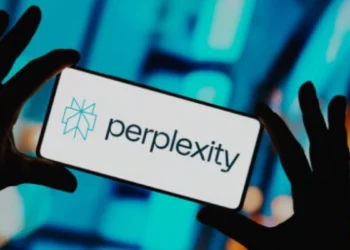AI in Media: Artificial Intelligence (AI) has drastically advanced in diverse industries, including media. Its technologies and applications are transforming content creation, curation, production, and consumption. AI has brought forth a dynamic shift that is redefining the media landscape.
In the field of content creation, AI has changed automated journalism and script generation. It uses complex algorithms to write news stories and reports with little human oversight. This technology is capable of analyzing data, discerning trends, and assembling articles on its own.
Moreover, there are plenty of AI-powered script tools to assist writers with ideation, editing, and writing. They can write entire blog posts, suggest plotlines, create character charts, and overall help in increasing productivity.
AI has a big impact on content curation and personalization. There are recommendation systems that use sophisticated machine learning algorithms to study what users like and their behavior to suggest relevant content. This helps keep the audience involved. Personalized advertising also adds to this progress by changing ads for each user based on what they are interested in and their online activity, leading to better marketing campaign results and improving the overall experience of the user.
The impact of AI is widely changing media production and post-production. It helps in enhancing visual effects. There are also automatic editing tools, which are becoming more common, that make video improvement faster by identifying key scenes, suggesting changes, and making first drafts.
Apart from all of this, AI is changing the distribution and consumption of media. Organizations operating in this sector are using predictive analytics to foresee trends, adjust the timing of content release, and improve decision-making processes. At the same time, they are examining their audiences to get in-depth views on their likes as well as how they engage. This way they can tailor their strategies so that they align best with what the audience wants and expects.
AI technologies and applications are actively transforming every aspect of the media industry, from content creation to consumption. This ongoing integration is leading to a future where content becomes not just more engaging and relevant but also more accessible, tailored specifically to individual preferences.
AI in Medicine [2024]: Benefits, Examples, and How It’s Transforming its Future
How are AI Technologies and Applications Used in Media?
Here are some ways AI technology and applications are being used in media:
Content Creation
1. Automated Journalism
Automated journalism is standing out as a major application of AI in the creation of media content. This technology employs natural language processing algorithms to draft news articles, reports, and other written material with no need for human input. In fact, leading news organizations such as The Associated Press and Thomson Reuters have embraced artificial intelligence to generate financial reports, sports summaries, and real-time news updates. These systems can analyze vast data volumes, pinpoint relevant patterns, and weave coherent narratives within seconds. Although automated journalism is not capable of writing investigative pieces, it is great at producing routine and data-dense reports.
2. Script and Story Generation
There are a number of powerful large language models (LLMs) that are capable of generating entire scripts and stories for film and television. For example, OpenAI’s GPT-4 can generate plot ideas, and dialogues, and complete scripts using the parameters given by human writers. Not only that, these models analyze scripts and narratives to even propose plot twists, character arcs, and thematic elements aligned with audience tastes and market trends. However, these AI models are not sentient enough to actually replace human writers when it comes to storytelling.
Content Curation and Personalization
1. Recommendation Systems
Platforms such as Netflix, YouTube, and Spotify leverage machine learning algorithms to examine user behavior, preferences, and viewing history to recommend personalized content for individual users. These platforms use collaborative filtering and content-based strategies and adopt hybrid approaches to provide an incredibly personal recommendations that cater to their taste. This personalization not only helps enhance the user experience but also drives retention and boosts consumption rates.
2. Personalized Advertising
In the advertising sphere, AI is changing brand-audience interactions through personalized ads. First, the machine learning algorithms scrutinize browsing history, social media activity, and purchase patterns. Then they create ad campaigns with high precision to guarantee relevance for each viewer. Programmatic advertising platforms are also using AI to optimize ad placements in real-time.
Production and Post-production
1. Visual Effects and CGI
AI has also been incorporated in post-production. Certain AI-powered tools automate tasks like rotoscoping, motion capture, and texture generation. It helps in cutting down timeframes and budgets significantly. Plus, filmmakers have been using machine learning algorithms to scrutinize datasets of visuals to develop stunningly realistic animations. Filmmakers use deep learning techniques to create lifelike facial animations and de-aging effects. For example, the hit Star Wars show “The Mandalorian” used deepfake technology to de-age Mark Hamill. The actor who played Luke Skywalker in the original trilogy is in his 60s and the show needed to portray a young Luke, and the output was pretty realistic.
2. Automated Editing
AI-powered editing software is changing automated video assembly. This software parses raw footage, isolates pivotal scenes, and weaves them into a seamless storyline according to predetermined standards or aesthetic tastes. This is especially useful for news outlets, sports channels, and digital storytellers who need to publish content swiftly. AI-driven editing tools enhance post-production workflows. They automatically adjust color grading, audio levels, and visual effects.
Distribution and Consumption
1. Predictive Analytics
Powered by AI, predictive analytics is playing a critical role in media content distribution and consumption. It forecasts audience behavior, content performance, and market demand through the analysis of historical data and current trends. This allows media companies to make informed decisions about programming schedules, marketing strategies, and content dissemination. Take the example of streaming platforms. They use predictive analytics to determine the best time for releasing content. They fine-tune promotional strategies and spot potential hit shows, using AI-powered insights to peak audience engagement and guarantee effective reach.
2. Audience Analysis
AI’s role in audience analysis is also important to the media industry. By analyzing vast amounts of data, advanced machine learning algorithms allow media companies to gain a deep understanding of their audience’s preferences and behaviors. This helps them tailor content, marketing campaigns, and user experiences to specific demographics. Plus, AI enables these companies to identify emerging trends and adapt their strategies accordingly, so that they stay ahead of the curve.
Future of AI in Media
Machine learning is poised to revolutionize the media industry by enabling sophisticated data analysis, personalized content delivery, and advanced natural language processing (NLP). They analyze data and provide deeper insights into audience preferences. This allows media companies to tailor their content and advertising to specific demographics.
Furthermore, machine learning will enhance automated journalism. As it will enable the creation of more nuanced and contextually relevant news articles and reports. AI-powered systems will also improve script and story generation, helping expand the diversity and quality of AI-generated content.
By streamlining visual effects and CGI processes, these algorithms will reduce costs and open doors for smaller production companies. Automated editing tools will further enhance efficiency, reducing the time and effort required to create high-quality content. As AI and ML continue to evolve, it will significantly improve the entire media value chain, from production to post-production.
The rise of AI-driven interactive content stands as one of the media industry’s most thrilling emerging trends. It is revolutionizing audience engagement by delivering more immersive and personalized experiences. This level of interactivity enhances audience engagement and opens new avenues for storytelling.
There is a lot of potential for AI in the media industry. Brands and advertisers use this technology to craft engaging, interactive ad campaigns to enhance audience engagement and conversion. On the other hand, media companies are launching subscription-based services to provide exclusive access to interactive content. AI content is going to redefine the boundaries of audience engagement and content creation.
Virtual reality (VR) and augmented reality (AR) are being molded with artificial intelligence. AI-enhanced VR and AR experiences deliver unprecedented immersion and interactivity for generating smart and responsive environments. You can take Metaverse as an example of this.
In the entertainment domain, AI-enhanced VR and AR generate increasingly immersive and interactive experiences. Another example is how VR films and games use AI to build dynamic environments that are responsive to users’ actions. This interactivity yields a compelling, personalized journey that immerses audiences in the narrative more deeply. Apple’s AR vision glasses also use AI to enhance user experiences by providing real-time information and interactive elements in the physical world.
AI-powered VR and AR technologies are expanding beyond entertainment to transform fields like journalism and education. News organizations are using AR to create immersive and interactive storytelling experiences, to allow for deeper audience engagement. Similarly, VR and AR are enhancing educational content to make learning more engaging and effective.
AI in Cybersecurity [2024]: Benefits, Examples, and How it is Transforming its Future
AI Companies and Startups in the Media Segment
Established tech giants such as Google, Amazon, and IBM are emerging as leaders in the rapidly changing field of media. Google is revolutionizing content recommendation systems with its subsidiary YouTube through advanced machine learning capabilities. By analyzing user behavior and preferences, YouTube’s algorithms actively curate personalized content.
Amazon Web Services, Amazon’s AI-driven platform, provides media companies with robust tools for leveraging AI in content creation, distribution, and analytics.
Similarly, IBM’s Watson AI has revolutionized media production processes by offering automated video editing, transcription, and sentiment analysis. These tech giants not only supply powerful artificial intelligence resources but also establish industry benchmarks that propel innovation and adoption throughout the media sector.
There are numerous AI-driven media projects underway. In 2020, the Washington Post developed Heliograf, an AI program capable of automatically generating news content. They used this award-winning technology to produce news stories on different subjects, automate different tasks, predict trends and patterns, and more.
Netflix’s use of AI is another successful implementation. By sifting through viewer data, the company not only recommends personalized content but also guides decisions regarding new productions.
These examples are shown to underscore AI’s potential to amplify efficiency and accuracy in media while tailoring user experiences.
The Bottom Line
Artificial Intelligence is undeniably transforming entire industries, including media. It has introduced a myriad of applications that enhance content creation, curation, production, and distribution. These AI technologies are now integral to modern media processes.
Looking to the future, AI will completely reshape media’s landscape through innovations such as real-time processing, virtual and augmented reality integration, predictive analysis, and more. These advancements will promise more engaging, interactive content and a transformation of audience consumption.
In conclusion, AI is significantly reshaping the media industry, making processes more efficient and personalized. As AI continues to evolve, its impact on the media landscape will only grow. By prioritizing ethical considerations, we can harness the full potential of AI while mitigating risks and building trust with audiences.
AI in Gaming: How Generative AI is Transforming Gameplay and Game Development
FREQUENTLY ASKED QUESTIONS
- How is AI being used in Media?
AI is being used in media for various purposes such as content creation, personalized recommendations, audience targeting, and even deepfake technology. It helps streamline workflows, analyze data for insights, and automate tasks to improve efficiency and effectiveness.
- What’s next for AI in Media?
The future of AI in media holds possibilities for even more personalized and interactive content experiences, enhanced audience engagement through chatbots and virtual assistants, and advancements in content moderation to combat misinformation and harmful content.
- How does AI reduce costs in Media?
AI reduces costs in media by automating repetitive tasks, such as content creation and distribution, which can save time and resources. Also, it can optimize advertising strategies and target specific audiences more effectively, leading to higher ROI for media companies.


















